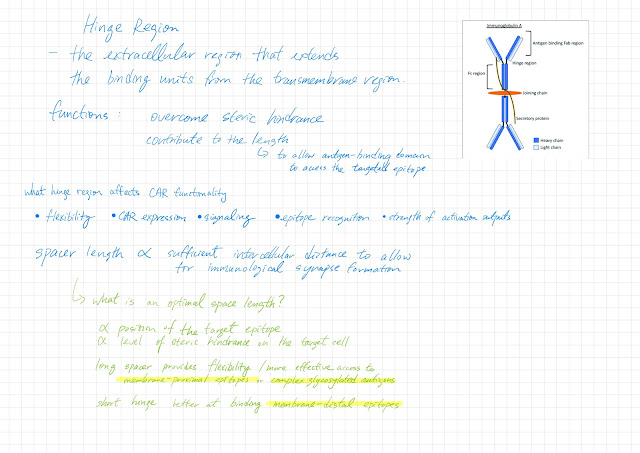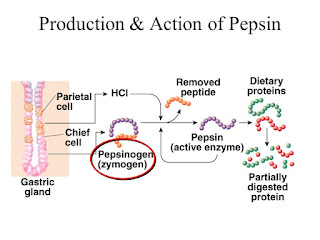The Hinge Region
Let's talk about the hinge region, the second component of a chimeric antigen receptor (CAR).
Refresher: A CAR is a synthetic receptor that consists of four components: an extracellular target antigen-binding domain, a hinge region, a transmembrane domain, and one or more intracellular signaling domains.
A. Structure and function of the hinge region
Before we dive into how the length of the hinge region could affect the CAR functionality, let's cover what the hinge region is and its function.
What is the hinge region?
A structural region that extends the binding units from the transmembrane domain.
What is the function of the hinge region?
It makes the receptor flexible to overcome steric hindrance and adds to the length to allow the antigen-binding domain to access the epitope of the target.
Which CAR functionality does the hinge region affect?
The hinge region is important because it affects several aspects of a CAR. It could affect CAR expression, signaling, epitope recognition, and flexibility of the CAR.
B. Spacer length of the hinge region
Finally, let's talk about the spacer length. The space length describes how long the hinge region is. You can think of it as the body of the snake, the longer the body, the further it could reach.
This is fascinating because we can now engineer the length of the hinge region based on the targeted epitope. The recipe is based on the answer to the following question: Is it a membrane-proximal epitope or a membrane-distal epitope?
Long spacer provides flexibility
This is quite a piece of common sense. The longer the hinge region, the more flexible the CAR is. Hence, it could be more effective to reach the membrane-proximal epitopes or the complex glycosylated epitopes.
A short hinge is better at membrane-distal epitopes
A shorter hinge means it is more effective at binding with membrane-distal epitopes because as compared to the longer spacer, the shorter receptor does not take extra space when binding with a closer target. Imagine how much space the long receptor needs to curl itself to fit between the space between the CAR and the target membrane!
Spacer length in practice
In practice, as in CAR-T cell therapy, commonly used long spacer CARs are MUC1 and ROR1. MUC1 = mucin 1; ROR 1 = receptor tyrosine kinase-like orphan receptor 1. Meanwhile, commonly used short hinge CARs are CD19 and CEA. CEA = carcinoembryonic antigen.
The hinge regions that are most commonly used are derived from the amino acids sequence from CD8, CD28, IgG1. IgG4.
One thing to be aware of is that the IgG-derived spacers interact with the Fc gamma receptors (FcγRs) and cause CAR-T cell depletion.




Comments
Post a Comment